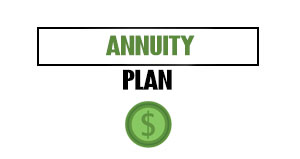A homeowner recently shared his experience with how tariffs directly affected his home improvement plans, illustrating the broader economic impact these trade policies can have on everyday consumers.
The story begins with a deck that needs repair. Last fall, the homeowner contacted a contractor who provided an estimate of $18,000 to resurface the deck. The homeowner agreed to the price and scheduled the work to begin on April 15.
However, when the homeowner called to confirm the appointment, he received unexpected news. The contractor informed him that the price had increased significantly to $24,000 – a 33% jump from the original estimate.
When questioned about this substantial increase, the contractor explained that the decking materials come from Canada and had been affected by recently implemented tariffs. This price increase directly impacted the homeowner’s decision-making process.
Table of Contents
ToggleThe Ripple Effect of Tariffs
Rather than proceeding with the contractor’s work at the higher price, the homeowner decided to take a different approach:
- Replace only the damaged decking boards himself
- Repaint the deck
- Complete the project for approximately $500 instead of $24,000
This personal anecdote demonstrates how tariffs can create a chain reaction throughout the economy. When the cost of imported goods increases due to tariffs, those costs are typically passed on to consumers. Consumers then often respond by:
1. Delaying purchases
2. Finding less expensive alternatives
3. Completing projects themselves rather than hiring professionals
4. Canceling projects altogether
The homeowner noted that while his wife wasn’t thrilled with the decision to handle the repairs himself, she appreciated making financial choices that protect their long-term financial security.
View this post on Instagram
Economic Implications
This example highlights how tariffs can slow economic activity. When consumers choose to spend less or defer spending due to higher prices, it reduces demand for services and products. This reduced spending can affect:
Contractors who lose jobs or must reduce their workforce
Retailers who sell fewer materials
Manufacturers who experience decreased demand
Workers who may face reduced hours or job losses
The homeowner’s decision to spend $500 instead of $24,000 represents a significant reduction in economic activity — the kind of decision that, when multiplied across millions of households, can contribute to broader economic slowdown.
The homeowner concluded his story by expressing hope that “this tariff thing doesn’t last too long,” reflecting the sentiment of many consumers and businesses affected by trade policies.
Frequently Asked Questions
Q: How do tariffs affect consumer prices?
Tariffs are taxes on imported goods that typically increase the cost of materials. These increased costs are often passed on to consumers through higher prices for products and services, as shown in the example where Canadian decking materials led to a 33% price increase for the deck resurfacing project.
Q: What options do consumers have when faced with tariff-related price increases?
Consumers can respond to tariff-related price increases by delaying purchases, seeking less expensive alternatives, handling projects themselves instead of hiring professionals, or canceling projects altogether. In the case described, the homeowner chose to do a smaller DIY repair for $500 rather than pay $24,000 for professional resurfacing.
Q: How might widespread consumer reactions to tariffs impact the economy?
When many consumers reduce spending in response to tariff-induced price increases, it can create a domino effect throughout the economy. Businesses may experience reduced demand for their products and services, potentially leading to decreased revenue, reduced working hours for employees, and even job losses. This collective reduction in economic activity can contribute to an overall economic slowdown.

















